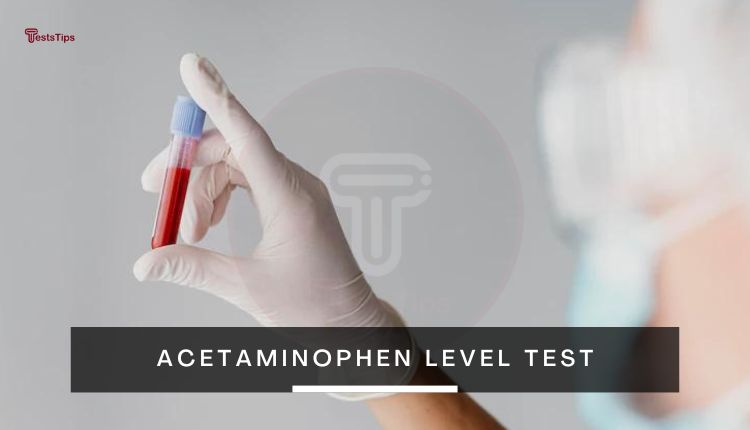Understanding the Importance of the Acetaminophen Level Test
Avoid risks of acetaminophen overdose by understanding the acetaminophen level test. Discover the importance of the test, preparations, and interpreting the results.

Table of Contents
An acetaminophen level test is a blood test that measures the amount of acetaminophen in your blood. Acetaminophen is a common pain reliever and fever reducer that is found in many over the counter (OTC) and prescription medications. It is safe when taken at the recommended dose, but can be toxic in high doses.
What is Acetaminophen Level Test?
The acetaminophen level test, also known as the APAP test, is a diagnostic tool used to measure the concentration of acetaminophen in a person’s blood. Acetaminophen, commonly found in over-the-counter pain relievers and fever reducers, is a widely used medication, with more than 200 brand-name medicines containing it. Examples include Tylenol, Excedrin, Nyquil, and Paracetamol (commonly used outside the U.S.).
When taken correctly, acetaminophen is safe and effective. However, overdose ingestion can lead to severe and potentially fatal liver damage.
Unfortunately, errors in dosing are frequent, and several factors contribute to this:
- Taking multiple medications containing acetaminophen: Many cold, flu, and allergy medicines contain acetaminophen. If you consume more than one of these medications, you may unknowingly exceed the safe dosage.
- Not adhering to recommended doses: The maximum daily dose for adults is generally 4000 mg within a 24-hour period. However, some individuals may need to limit their intake to 3000 mg per day for safety. The appropriate dosage for children varies based on their weight and age.
- Administering adult medication to children instead of using formulations specifically designed for pediatric use.
If you suspect an acetaminophen overdose in yourself or your child, it is crucial to contact your healthcare provider immediately. They may recommend testing and treatment, which could involve visiting the emergency room.
Why Do You Need the Acetaminophen Level Test?

- Monitoring Therapeutic Levels: If you are prescribed acetaminophen as part of your treatment plan, the test helps ensure that you are taking the correct dosage.
- Assessing Overdose Risk: If you have unintentionally or intentionally taken an excessive amount of acetaminophen, this test can detect potential liver damage caused by overdose.
- Evaluating Suspected Acetaminophen Poisoning: In emergency situations, such as suspected acetaminophen toxicity, this test provides rapid results to guide immediate medical interventions.
Your doctor may order an acetaminophen level test if you have any of the following symptoms:
- Nausea and vomiting
- Abdominal pain
- Dizziness
- Confusion
- Seizures
- Liver failure
What Happens During the Test?
- Blood Sample Collection: The acetaminophen level test typically involves drawing a small blood sample from a vein in your arm using a sterile needle.
- Laboratory Analysis: The collected blood sample is sent to laboratories where specialized equipment and techniques are used to measure the acetaminophen concentration in your blood.
- Turnaround Time: Depending on the laboratory, the test results are usually available within a few hours or a couple of days.
Preparation For Acetaminophen Level Test
- Fasting: Your healthcare provider may advise you to fast for a specific period before the tests, typically around 4 to 6 hours. Fasting helps eliminate any potential interference from recent food consumption.
- Medication Review: Inform your healthcare provider about any medications, prescription or over-the-counter, that you have been taking, including supplements. Certain drugs may influence the accuracy of the acetaminophen level test.
- Follow Instructions: Adhere to any specific instructions given by your healthcare provider regarding the test, such as avoiding alcohol or certain substances before the blood draw.
Interpreting the Results
The result of serum acetaminophen level test provide information about the concentration of acetaminophen drug level is a blood sample. These results are typically reported in milligrams per liter (mg/l) or micrograms per milliliter (µg/mL). The interpretation of the test results can be summarized as follows:
- Therapeutic Range: If the blood level of acetaminophen falls within the therapeutic range, it indicates that the drug concentration is within the desired and safe therapeutic level. This suggests that the medication is being appropriately metabolized and effective in managing pain or fever.
- Low Levels: Low levels of acetaminophen in the blood may indicate inadequate dosage or metabolism of the medication. In such cases, it may be necessary to adjust the dosage or consider alternative pain relief options.
- High Levels: Elevated levels of acetaminophen in the blood may suggest an overdose or excessive intake of the medication. This can potentially lead to liver damage and other serious health complications. Immediate medical attention is crucial in cases of high acetaminophen levels to prevent further harm and initiate appropriate treatment.
It is important to note that the interpretation of the test results should be done in consultation with your healthcare provider. They will take into account your medical history, symptoms, and the reason for the test to provide a comprehensive analysis and guide any necessary actions or treatment.
Related Tests
In addition to the acetaminophen level test, there are several related tests that may be conducted to assess liver function and detect any potential complications. These tests include:
- Liver Function Tests (LFTs): LFTs evaluate various liver enzymes and proteins in the blood, including alanine aminotransferase (ALT), aspartate aminotransferase (AST), alkaline phosphatase (ALP), and bilirubin. These tests help assess overall liver health and detect any signs of liver damage or dysfunction.
- Prothrombin Time (PT) and International Normalized Ratio (INR): PT and INR tests measure the time it takes for blood to clot. Abnormal results may indicate impaired liver function, as the liver produces clotting factors.
- Liver Panel: A comprehensive liver panel combines multiple tests, including LFTs, PT, INR, and additional markers such as albumin and total protein. This panel provides a more comprehensive assessment of liver health and function.
- Renal Function Tests: As acetaminophen can affect kidney function in certain cases, renal function tests, such as blood urea nitrogen (BUN) and creatinine tests, may be performed to evaluate kidney function.
- Complete Blood Count (CBC): A CBC test assesses the levels of different blood cells, including red blood cells, white blood cells, and platelets. It can help identify any abnormalities or signs of infection or inflammation that may impact liver function.
- Imaging Studies: In some cases, imaging studies such as ultrasound, computed tomography (CT), or magnetic resonance imaging (MRI) may be recommended to visualize the liver and detect any structural abnormalities or signs of liver damage.
In conclusion, the acetaminophen level test plays a crucial role in monitoring therapeutic levels, assessing overdose risk, and evaluating suspected acetaminophen poisoning. By understanding the test’s process, preparing appropriately, and interpreting the results, you can work together with your healthcare provider to ensure safe and effective acetaminophen usage.
